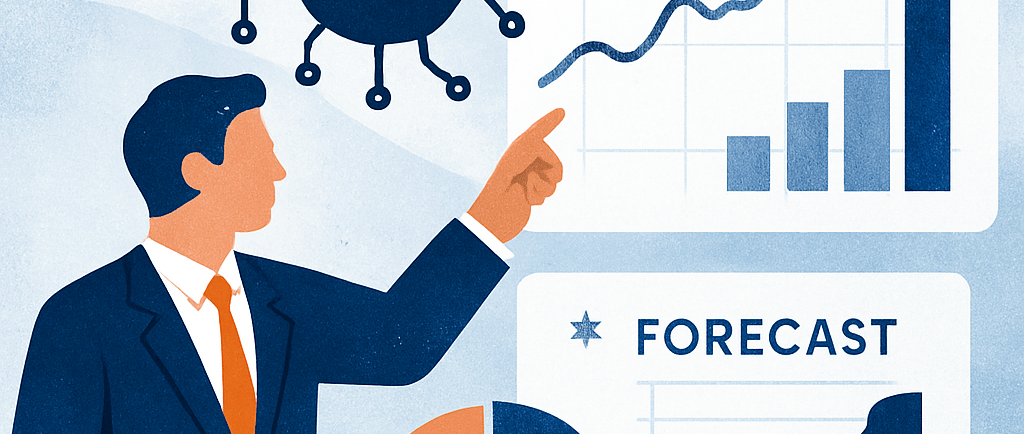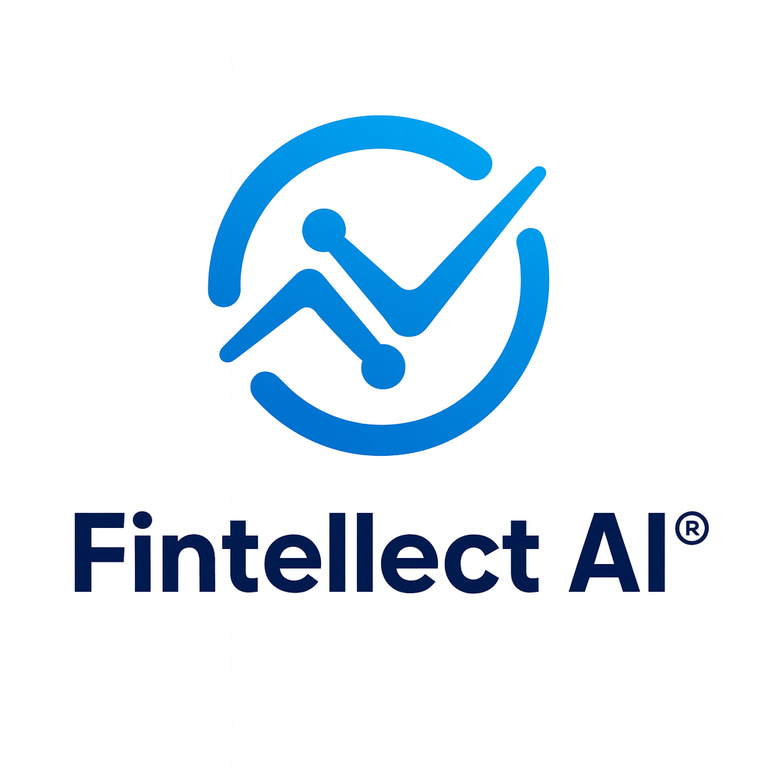AI in Finance: From Awareness to Mastery: From Data to Decisions — Forecasting and Risk with AI
How Financial Teams Can Navigate Uncertainty with Transparent and Adaptive Models
Zhivka Nedyalkova
4/30/20254 min read


How Financial Teams Can Navigate Uncertainty with Transparent and Adaptive Models
Why Forecasting Is No Longer Optional
In today's volatile environment, traditional forecasting methods are simply not enough. Finance teams need more than monthly projections and static budgets—they need dynamic insights, faster updates, and a deeper understanding of risk. This is where Artificial Intelligence steps in. But it’s not just about automation. It's about turning data into foresight and making decisions that are not just quick, but right.
In this fourth article from our AI in Finance: From Awareness to Mastery series, we explore how AI-powered forecasting models—when paired with explainability and governance—can help finance professionals manage uncertainty and seize opportunity with confidence.
1. What Makes Forecasting with AI Different?
Unlike spreadsheet-based projections or static statistical models, AI-driven forecasting learns continuously from new data and reacts to changes in real time.
✅ AI Forecasting = Adaptive + Predictive + Explainable
🔴 Legacy Forecasting = Static + Retrospective + Rule-Based
Let’s break down the features that make AI forecasting stand apart:
Adaptability: AI models adjust to new patterns and outliers without manual reprogramming.
Speed: Real-time processing allows instant updates to projections.
Precision: AI considers a broader set of variables—from historical trends to external market signals.
Transparency: With the right tools (XAI), the logic behind AI predictions becomes explainable and auditable.
2. The Core Models: ARIMA, Logistic Regression, Prophet
Each of these models has strengths, depending on the scenario.
ARIMA (Auto-Regressive Integrated Moving Average)
Best For: Time-series data with seasonal patterns and trends (e.g., revenue, cash flow).
Learns from past trends to predict future values.
Strong in modeling short-term forecasts with stable variance.
Example: A retail business uses ARIMA to project weekly sales during the holiday season, adjusting for prior-year patterns.
Logistic Regression
Best For: Classifying risk outcomes or binary events (e.g., loan default or fraud probability).
Predicts likelihoods based on independent variables.
Simple yet powerful when explainability is a priority.
Example: A fintech lender classifies customers as “likely to repay” vs. “high risk” based on payment history, credit score, and behavior data.
Prophet (by Facebook)
Best For: Forecasting with missing data, outliers, or strong seasonality.
Designed for business users, with intuitive settings.
Great at handling holiday effects and non-linear trends.
Example: A subscription-based SaaS company uses Prophet to forecast monthly recurring revenue (MRR), incorporating promotional periods and churn rates.
3. What Is Explainable Risk—and Why Does It Matter?
The more decisions we automate, the more important it becomes to understand why a model made a prediction.
This is where XAI (Explainable AI) becomes irreplaceable.
🟢 Explainable Risk is the ability to trace how a model evaluated the factors contributing to a risk prediction.
Example: Instead of simply labeling a customer as “high risk,” an AI model can show that:
Late payments in the last 3 months (+40% risk)
High debt-to-income ratio (+25%)
Stable job history (–15%)
This not only boosts trust but also enables action: Should the loan be declined, adjusted, or further reviewed?
💡 XAI is not optional—it’s foundational to risk governance, regulatory compliance, and ethical AI deployment.
4. Key Use Cases: Where AI Forecasting Adds Value
1. Cash Flow Forecasting
AI ingests transaction history, invoice cycles, payment behavior, and economic indicators.
Result: Real-time predictions that flag liquidity risks weeks in advance.
2. Demand Planning and Inventory
Time-series models forecast future product demand.
Result: Improved supply chain agility and cost efficiency.
3. Credit Risk Modeling
Logistic regression and anomaly detection help evaluate creditworthiness dynamically.
Result: Reduced default rates and fairer lending decisions.
4. Revenue Forecasting for Startups
Prophet adapts to early-stage volatility.
Result: Better visibility into burn rate, runway, and investor readiness.
5. Scenario Planning and Sensitivity Analysis
AI simulates multiple economic scenarios (e.g., interest rate hikes).
Result: Informed board-level strategic decisions.
6. Operational Risk Alerts
AI flags anomalies in transaction flows or cost structures.
Result: Early detection of fraud or budget deviations.
5. From Black Box to Glass Box: Trusting AI Forecasts
Trust isn’t built on predictions alone. It’s built on transparency.
✅ Can you trace the inputs?
✅ Can you understand the model’s behavior?
✅ Can you adjust or override it when needed?
The combination of Human-in-the-Loop (HITL) + Explainability is the gold standard.
Practical Example: A CFO receives a 3-month forecast with a warning about a possible cash shortfall.
Instead of blindly accepting it, they review the XAI breakdown, validate the logic, and decide whether to trigger a cost control measure. Trust through clarity—not mystery.
6. What to Avoid: The Illusion of Forecasting
Not all tools labeled as “AI-powered” actually qualify. Here’s how to spot the difference:
❌ Outputs don’t change when new data is added
❌ No explanation is given for the forecast
❌ Manual re-entry or intervention is required for updates
❌ Models are not trained or retrained over time
🟢 Recommendation: Ask for proof of continuous learning, input traceability, and XAI visualization features.
7. Forecasting Without Fear: Human-Centered AI in Practice
AI is not here to replace financial judgment—it’s here to enhance it.
The best results come from collaboration:
AI detects patterns humans can’t.
Humans apply judgment that AI lacks.
Together, they deliver forecasts that are both fast and fair.
Better Forecasts, Smarter Decisions
Forecasting and risk analysis powered by AI don’t eliminate uncertainty—but they make it manageable. When you pair the right models (ARIMA, logistic regression, Prophet) with transparency (XAI) and oversight (HITL), you move from reactive guesswork to proactive control.
In the end, AI in finance is not just about automation. It’s about accountability, agility, and advantage.
